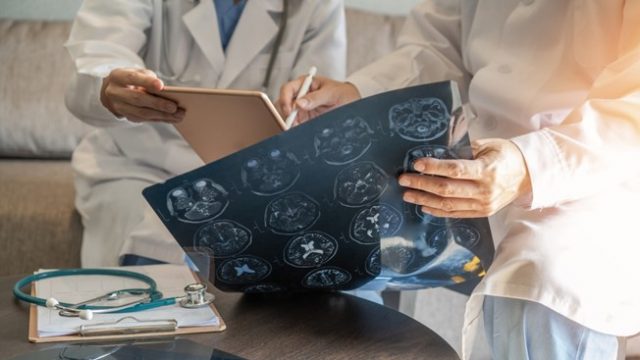In the rapidly advancing field of radiology, where the intricacies of the human body are revealed through cutting-edge imaging techniques, the importance of education and mentorship is paramount. As we embark on a new era in medical diagnostics, the role of radiologists becomes increasingly vital. These professionals not only interpret medical images to diagnose diseases but also contribute to innovative research that propels the future of medical diagnostics. Thus, educating the next generation of radiologists with a forward-thinking and comprehensive approach is crucial for advancing radiological care and research.
Dr. Jabi Shriki, with his extensive background as an accomplished radiologist, including significant faculty positions and contributions to education and research, exemplifies the type of multidisciplinary expertise that enhances the radiology field. This article from Dr Jabi Shriki explores the importance of education and mentorship in radiology, highlighting the strategies and innovations that are shaping the radiologists of tomorrow.
The Foundation of Radiological Education
At the core of educating future radiologists is a robust and dynamic curriculum that covers the vast complexities of medical imaging. Traditional medical education has always emphasized a strong foundation in the basic sciences, such as anatomy, physiology, and pathology. However, the field of radiology demands a more profound understanding of these subjects, given the detailed nature of diagnostic imaging. Jabi Elijah Shriki explains how radiology education programs are increasingly integrating advanced imaging technologies, such as MRI, CT scans, and PET imaging, into their curriculums, equipping students with the necessary tools to diagnose a wide array of conditions accurately.
Dr Jabi Shriki understands that with the evolution of personalized medicine, radiology education is also focusing on tailoring diagnostic and treatment plans to individual patients. This approach requires a deep understanding of the technological, genetic, environmental, and lifestyle factors that can influence diseases. As such, the next generation of radiologists is being trained to consider these multifaceted aspects when interpreting images, ensuring that diagnostics are as personalized and precise as possible.
Mentorship: The Guiding Light in Radiology Education
While a comprehensive curriculum is essential, the role of mentorship in radiology education cannot be underestimated. Jabi Shriki emphasizes that mentorship provides budding radiologists with the guidance, support, and inspiration they need to navigate the complexities of the field. Through mentorship, experienced radiologists can impart valuable knowledge, share diagnostic experiences, and foster a sense of curiosity and passion for radiology among their mentees. Jabi Elijah Shriki understands that this one-on-one interaction is invaluable in developing the analytical and problem-solving skills necessary for interpreting complex medical images.
Dr Jabi Shriki believes that mentorship extends beyond clinical education to encompass research and professional development as well. By involving students and residents in research projects, mentors can ignite a passion for discovery and innovation in radiology. This hands-on experience is crucial for developing the next generation of radiologist-scientists who will continue to push the boundaries of medical imaging technology.
The Role of Technology and Innovation in Radiology Education
Technology and innovation are playing an increasingly significant role in radiology education. Simulation-based training, virtual reality (VR), and augmented reality (AR) are revolutionizing how radiology is taught, allowing students to gain hands-on experience in interpreting images in a risk-free environment. Jabi Elijah Shriki understands how these technologies enable learners to practice diagnostic techniques, visualize complex anatomical structures, and simulate patient interactions, enhancing their skills and confidence before they ever interpret an actual patient scan.
Dr Jabi Shriki also emphasizes how online platforms and e-learning tools are making radiology education more accessible than ever before. These resources provide students with the flexibility to learn at their own pace and access a wealth of information from anywhere in the world. As the field of radiology continues to evolve, these technological advancements will be instrumental in educating a diverse and globally distributed workforce of radiologists.
Fostering a Culture of Continuous Learning and Collaboration
The field of radiology is ever-changing, with new techniques and treatments emerging rapidly. As such, the education of radiologists does not end with graduation. Continuing medical education (CME) programs and professional development opportunities are essential for radiologists to stay abreast of the latest advances in their field. Jabi Shriki explains how these programs encourage lifelong learning and ensure that radiologists continue to provide the highest standard of diagnostic care to their patients.
Dr Jabi Shriki emphasizes the importance of fostering a culture of collaboration among radiologists, researchers, and healthcare professionals from other disciplines to advance radiological care. Multidisciplinary teams can address complex medical conditions more effectively, combining their expertise to develop innovative diagnostic and treatment models. Through collaboration, the next generation of radiologists can learn to approach patient care comprehensively, ensuring that all aspects of a patient’s health are considered in their diagnostic plans.
The education and mentorship of the next generation of radiologists are critical to the continued advancement of radiological care and research. By embracing a comprehensive curriculum, fostering mentorship, leveraging technology, and promoting continuous learning and collaboration, we can ensure that future radiologists are well-equipped to meet the challenges of this intricate field. Dr Jabi Shriki believes that as we look to the future, it is clear that the education of radiologists will remain a cornerstone of progress in enhancing medical diagnostics, ultimately improving patient outcomes worldwide.









